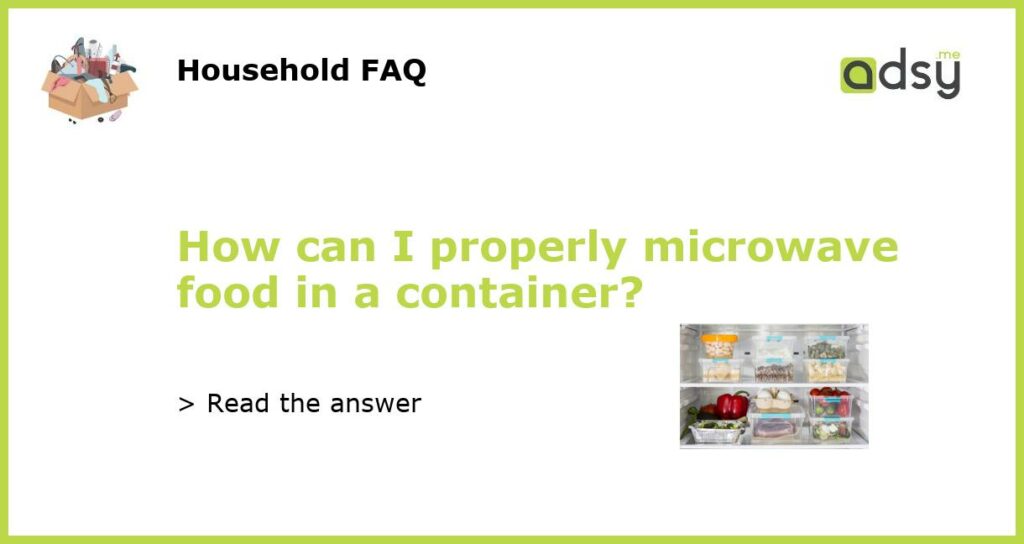Why microwaving in a container is convenient
Microwaving is one of the most convenient ways to cook food, especially when you’re in a hurry. It’s fast and saves time while cooking or reheating leftovers, making it an essential modern kitchen appliance. However, for safety reasons, it’s important to learn how to properly microwave food in a container to avoid health hazards, including burns, chemical contamination, and even explosions.
What containers are safe for microwaving?
When choosing a container to microwave your food, look for microwave-safe or microwavable containers, which are typically made of glass, ceramics, or plastics labeled with a microwave-safe symbol. Avoid containers made of metals, such as aluminum foil, as they can cause sparks and fire hazards. Also, avoid using paper bags, brown grocery bags, or newspaper as they can ignite and cause a fire.
How to properly microwave food in a container
Before microwaving your food, make sure to vent the container, leaving an opening for steam to escape while cooking. This helps prevent pressure from building up and avoid the risk of the container exploding. Avoid overfilling the container as it can cause spillage while cooking and create a mess in your microwave.
When microwaving, start with short intervals, such as 30 seconds, and check regularly until the food is thoroughly heated. Avoid overheating as it can cause the container to melt or crack and create health hazards. Stir or rotate the food periodically to ensure even heating, especially when microwaving soups or liquids, which can develop hotspots and cause burns.
Precautions to take when microwaving food in a container
When microwaving, be cautious of steam that escapes from the container as it can cause burns. Avoid touching the container immediately after cooking as it can be hot and cause burns. Use oven mitts or potholders to remove the container from the microwave. When microwaving liquids or foods with high water content, such as tomatoes or grapes, be aware of the superheating phenomenon, which can cause the liquid to boil violently and explode when disturbed.
Microwaving food in a container is convenient and saves time, but it’s important to do it safely. Choose microwave-safe or microwavable containers, vent the container, avoid overfilling, start with short intervals, stir or rotate for even heating, and be cautious of steam and superheating. By following these guidelines, you can safely microwave your food without creating health hazards or damaging your microwave.





![[10-Pack]Glass Meal Prep Containers -MCIRCO Food Storage Containers with Lifetime Lasting Snap Locking Lids, Airtight Lunch Containers, Microwave, Oven, Freezer and Dishwasher](https://m.media-amazon.com/images/I/41ZdkMs1ciL.jpg)
![Efforias [10 Pack, 28oz] 1 Compartment Plastic Meal Prep Containers - Reusable BPA Free Food Containers with Airtight Lids - Microwavable, Freezer and Dishwasher Safe](https://m.media-amazon.com/images/I/61sWnkIs3pL.jpg)